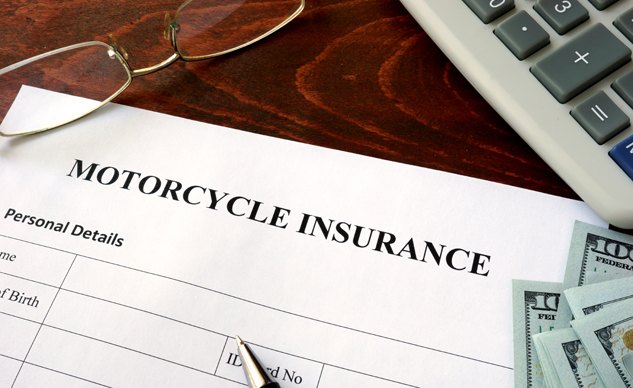Motorcycle Insurance for Beginners

A necessary evil
We were all beginners once, right? Whether it be motorcycles, soccer, ballet, etc., the unknown pitfalls of any new venture can cause excitement and joy or, more often than not, leave you scrambling in a fit of confusion. So let’s take a look at tips for helping new motorcyclists navigate their way through the tricky insurance web of deceit! Motorcycle insurance for beginners, take one.
So you fancy yourself a biker?
Congratulations! Welcome to the fold, brother! So, let’s chat about motorcycles. Have you decided which motorcycle to purchase yet? Are you a new rider, or have you been roosting the other kids at the track since you were knee-high to a Cholla cactus?
These things matter, not only regarding how your general experience will go, but also to your insurance company. Well, actually, the fact that you have been a professional racer since you were 12, does not matter. Sorry. If you’re under 25, and it’s your first bike, you will likely be teetering at the high end of insurance premiums, but there are ways to mitigate your insurance costs.
How much does insurance cost? What’s the cheapest motorcycle insurance? All of these questions and more will be addressed. Read on!
What kind of motorcycle will you be riding?
First of all, your motorcycle choice makes a huge difference. Are you looking at that shiny new Panigale V4 that Ducati just released onto the scene? Bad choice in terms of insurance. In fact, that might be the costliest choice to a fresh motorcyclist, not to mention being a bad idea for plenty of other reasons. Instead, consider motorcycles that aren’t labeled as sportbikes by most insurance providers. I still chuckle to myself now and then when I think back to registering my first street bike, a 2001 Triumph Speed Triple, and found the insurance to be incredibly affordable because it wasn’t considered a sportbike, although it had more power and performance than some.
The type of motorcycle, engine displacement, price, and year, among other factors, will affect your premiums, keep that in mind.
What can I do to lower my premium?
I thought you’d never ask. Besides carefully choosing your preference of iron steed, you can take a motorcycle safety class. Completing motorcycle safety training, whether it be a beginner course or an experienced rider course, can save you money on your premiums. Planning to stick with the same insurance provider as your automotive policy? Most companies offer group discounts for bundling vehicles as well. To ask how much motorcycle insurance costs is nearly impossible to answer. Your best bet? Call a few insurance providers and get or quote. Or just do it online. Many large insurance companies provide online quotes and this way you can test the waters easily without asking an agent to quote you for five different models you’re considering.
Some things you can’t change
Unfortunately, your age and location will factor in and those are things that you cannot change. As mentioned before, if you’re under 25 you’re likely to face higher premiums. There is a bright side though. In most scenarios, motorcycle insurance is much cheaper than auto insurance. So there’s that.
Consider some of these best practices so you don’t need to use your insurance: Use a motorcycle lock of some sort. I used a caliper lock for a few years and a massive chain lock at one point as well to help deter opportunistic thieves. Other things that will help you from needing to contact your insurance provider are as easy as being extremely careful and vigilant at intersections of any and every type and practicing your emergency maneuvering skills in a safe area until it is all muscle memory. Check out our man Brent’s practice tips here.
Be sure you and your motorcycle are covered
The most important point regarding insurance is to make sure you understand your coverage. The worst possible feeling is paying your premium month in and month out only to find out after an accident that you’re not fully covered or that your deductible is as much as that used motorcycle that you bought. Let me define a few insurance terms that can leave the uninformed or first-time insurance buyer, in a state of confusion:
Deductible: Is the amount you must pay to your insurance company before they begin paying for the rest. If you bought a $1,500 motorcycle, you don’t want a $2,000 deductible.
Liability: Liability insurance covers you in the event of an accident in which you were at fault. This is generally the state minimum.
Collision: Collision pays to repair your motorcycle in the event of an accident, regardless of who is at fault.
Comprehensive: Comprehensive coverage pays for damage to your motorcycle that is not the result of an accident such as theft, vandalism, or natural disaster. Of note, comprehensive coverage will pay the market value. So, say your bike is stolen, the market value of the motorcycle is $6000 but you owe the bank $8,000 on your loan, comprehensive will only pay you the market value of $6,000. This is where…
Gap Insurance: …Gap insurance comes into play. Gap insurance covers the difference between what you owe to the bank or finance company on your bike, and what your insurance company will pay out as the market value or your motorcycle.
Uninsured/Underinsured Coverage: Uninsured/Underinsured coverage covers you in the event that an at-fault driver hits you and they can’t pay for the resulting damage whether it be motorcycle damage, bodily injury, or pain and suffering.
So, just tell the insurance company you want full coverage, right? WRONG. The key to knowing what your insurance will do for you is to work through every part carefully with a full explanation of what you’re signing up for. The best insurance is the most coverage that you can reasonably afford.
To quote the incorrigibly eloquent Gabe Ets-Hokin, “Like Xanax, a shotgun or personal lubricant, insurance is one of those things it is far better to have and not need than to need and not have.”
Have any tips for first-time motorcycle insurance buyers? PLEASE, leave them in the comments!

Ryan’s time in the motorcycle industry has revolved around sales and marketing prior to landing a gig at Motorcycle.com. An avid motorcyclist, interested in all shapes, sizes, and colors of motorized two-wheeled vehicles, Ryan brings a young, passionate enthusiasm to the digital pages of MO.
More by Ryan Adams










































Comments
Join the conversation
I would have like to seen some comparisons and suggestions between companies and policies. Suggestions of preferred companies. Comparisons between high deductible vs low deductible and how much more is the cost if you are under 25. Examples of the cost of insurance for a sport bike vs a cruiser. Prices for winter lay-up policies.This article seems a bit incomplete without this information.
This article is a bit incomplete and seems to be hastily written. For example: The definition of deductible says it’s what you must pay before “they begin to pay for the rest”. That’s a pretty non-specific description. The deductible applies only to first party coverage (comp and collision), not for BI or PD (if you’re at fault and your insurance has to pay for someone else’s property damage or injury). The definition for Liability Coverage is also not very well written, saying it “covers you” (for what?) and that “this is generally the state minimum”. Liability coverage is for property damage and injuries to third parties if you are at fault. You can choose the state minimum (15/30/5 in California), but it’s often wise to choose higher limits in case you cause more injury and damage than those limits.
As someone who has been an insurance claims supervisor for over 21 years, I’ve seen a lot. I’d really recommend getting the highest UMBI (uninsured motorist bodily injury) limits that you can afford. Chances are if you’re on a motorcycle and you get hit by someone else, you’re going to get hurt and have some medical bills. Maybe a LOT of medical bills. If the other party is uninsured, or UNDERinsured, your UMBI coverage will cover that + pain and suffering, lost wages up to the limits that you have chosen. In California, however (and maybe in other states) you cannot purchase a policy with higher UMBI limits than your PD/BI limits. So, if you want 100/300k UM limits, you’ll have to purchase the same level of coverage or higher for your BI/PD limits.
Someone else here mentioned PIP, which they have in Florida, Washington, Oregon, and other states (not in CA). In states like California where PIP is not an option there is Med Pay or Medical Payments coverage. This covers your medical bills (but not pain and suffering or lost wages) if you’re injured regardless of whether you’re at fault or not. Hope this adds something to the conversation.